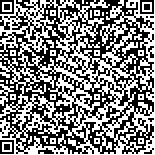| 摘要: |
| [摘要] 目的 探讨和比较传统切开复位内固定术和3D打印数字化技术辅助手术治疗髋臼后壁骨折的临床治疗效果。方法 对该院2014-05~2016-02分别采用传统切开复位内固定术(传统手术组,31例)和3D打印数字化技术辅助手术(3D打印手术组,32例)治疗髋臼后壁骨折共63例,对两组患者手术时间、术中出血量、术后引流量、术后髋关节疼痛评分(VAS)和髋关节功能评分(Harris)进行比较分析。结果 两组共63例患者均顺利完成手术,住院和随访期间无死亡病例,两组病例无并发症发生。63例患者术后均获得6~12个月随访,平均9.7个月。3D打印手术组在手术时间、术中出血量和术后引流量方面优于传统手术组,两组比较差异有统计学意义(P<0.05);3D打印手术组在术后2周和3个月髋关节VAS评分、Harris评分优于传统手术组,两组比较差异有统计学意义(P<0.05);两组在术后6个月髋关节VAS评分、Harris评分比较差异无统计学意义(P>0.05)。结论 3D打印数字化技术辅助髋臼后壁骨折的手术治疗,有助于术者制定个体化的治疗方案,缩短手术时间,减少软组织损伤,减少失血量,实现微创、精准治疗,疗效满意。 |
| 关键词: 髋臼后壁骨折 3D打印数字化技术 切开复位内固定术 |
| DOI:10.3969/j.issn.1674-3806.2017.03.04 |
| 分类号:R 68 |
| 基金项目:广西科学研究与技术开发计划项目(编号:桂科攻14124004-1-7) |
|
| Clinical experience in the treatment of acetabular posterior wall fractures with three dimensional printing digital technology |
|
LU Jian-jun, TAN Hai-tao, YANG Ke-qin, et al.
|
|
Department of Orthopaedics, the People′s Hospital of Guigang City, Guangxi 537100, China
|
| Abstract: |
| [Abstract] Objective To explore and compare the clinical effects between the traditional open reduction and internal fixation in combination with three dimensional(3D) printing digital technique on the treatment of acetabular posterior wall fracture.Methods The clinical data of 63 cases with acetabular posterior wall fractures in our hospital from May 2014 to February 2016 were respectively analyzed. All the patients were divided into two groups according to the different surgical approaches. The traditional surgery group(n=31) receivd traditional open reduction and the 3D printing openation group(n=32) receivd internal fixation and 3D printing digital techniqne in the treatment of acetabular wall fracture. The operation time, intraoperative bleeding volume, postoperative drainage volume, postoperative hip pain scores and hip function scores were compared between the two groups.Results All the patients were operated successfully, with no death and complications during hospitalization and follow-up period. All the patients were followed up for 6 to 12 months, with an average of 9.7 months. The operation time, intraoperative bleeding volume and postoperative drainage volume in the 3D printing operation group were significantly shorter or less than those in the traditional surgery group(P<0.05). Two weeks and 3 months after the surgery, the hip VAS and Harris scores in the three dimensional printing operation group were better than those in the traditional surgery group(P<0.05). Six months after the surgery, there were no significant differences in the hip VAS and Harris scores between the two groups(P>0.05).Conclusion Internal fixation in combination with three dimensional printing digital technique with acetabular posterior wall fractures helps develop individualized treatment regimens for the patients, shortens the operation time, reduces the soft tissue dissection and decreases the volume of blood loss. |
| Key words: Acetabular posterior wall fracture Three dimensional(3D) printing digital technique Open reduction and internal fixation |

